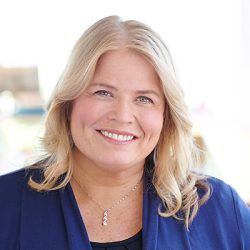
I was recently a panelist on a webinar focused on the affordability challenges in higher ed. The event was moderated by U.S. News & World Report and featured panelists with three very different perspectives
- California State University: one of the US’s largest and most diverse public universities
- Colgate University: a private liberal arts college in Madison County, New York
- The Institute for College Access and Success: an organization looking at college affordability from a public policy perspective
All three organizations are doing some really interesting things to address the affordability issue.
In this first of two blogs about the discussion, I wanted to share a few panelist insights regarding the changing notion of education affordability, and the importance of helping students stay on course to graduate. The second blog post will share more thoughts about on-campus vs. remote learning and the role technology plays towards making higher education more affordable.
If you are interested in the complete discussion, you can view it here.
The Evolving Notion of College Access and Affordability Post Pandemic
Almost every institution I speak with these days is taking a hard look at ways to make education more attainable and affordable. As discussed during the session, Colgate is no exception. The University already has a “no loan” program in place for families with annual incomes under $150K and it has eliminated tuition entirely for families with incomes under $80K. Now it is looking to expand those programs and adjust the way it determines financial assistance by factoring tuition as a percentage of family income. According to Tara Bubble, Dean of Admissions, it’s a way of balancing affordability against the value of a Colgate education. Bubble also talked about the challenge of assessing family financial needs in real time. “So much of the standard data used to determine financial need is old. We need to put new processes and systems in place,” she said.
At Cal State, the pandemic put a lot of pressure on the financial aid office to re-evaluate student/family eligibility and how to assess and apply funding to specific situations. Sylvia Alva, Executive Vice Chancellor for Academic and Student Affairs, mentioned how the quick pivot to online virtual learning as a result of the COVID pandemic highlighted simple needs like computer equipment and reliable internet connections. So, Cal State made the commitment to offer its incoming class digital tools to aid the process. The school is also considering ways to use existing federal grants to cover student expenses like housing, computers, and transportation.
Michele Streeter, Associate Director of Policy and Advocacy for The Institute for College Access and Success, pointed to how enrollment declines were concentrated among students of color, and low-income backgrounds. “Higher education is simply out of reach for too many people today. Lots of institutions are doing great work, but we need broader reforms from the top down. Aid programs (like Pell) are not enough.”
The topic of international students also came up. Despite the perception that all international students are wealthy and don’t worry about education costs, that reality has changed significantly in the last five years as students from different socio-economic classes all over the world look to take advantage of the opportunities afforded by global education. These students often don’t have access to many of the aid programs US students do, so schools are looking for more flexible ways to make it easier for international students to pay their bills – such as installment payment plans. More and more entrepreneurs are also offering loans to international students enrolled in STEM programs.
Keeping Students on Course to Graduate
Another issue that was raised was the importance of helping students finish school on schedule. Students facing financial pressures often take longer to finish, which increases their costs, making it harder to complete their education, and often causing them to borrow more.
Cal State is looking at ways to enhance its partnerships with community colleges and high schools to accelerate students’ progress towards their degrees. This includes creating roadmaps that chart the fastest paths to graduation for students. Colgate is helping students balance work and their studies using proactive communications and building safety and support networks to prevent students from falling too far behind – both financially and academically.
At Flywire, we see this challenge at several of our client schools with students that may be facing financial hardships disenrolling halfway through a semester due to an inability to pay tuition. This can be prevented by using technology to flagstudents that may be falling behind in payments and directly engaging with them proactively to set up interest-free payment plans that help enable them to stay in school. Arranging for prepayment of some portion can also prove beneficial while also reducing the amount a student needs to borrow.
Want to learn more?
If you want to see why Flywire is the Trusted Choice of millions of students, thousands of institutions and hundreds of education agents around the world, check out the following resources:
- Access our global payments study to uncover additional higher education trends
- Explore our interactive maps to see how students and institutions experience the difference with Flywire
- Discover how our Comprehensive Receivables Solution simplifies the payment process
- See how Payment Plans help make education costs more manageable for students and families worldwide
- Check out how Flywire helps institutions keep more students enrolled
